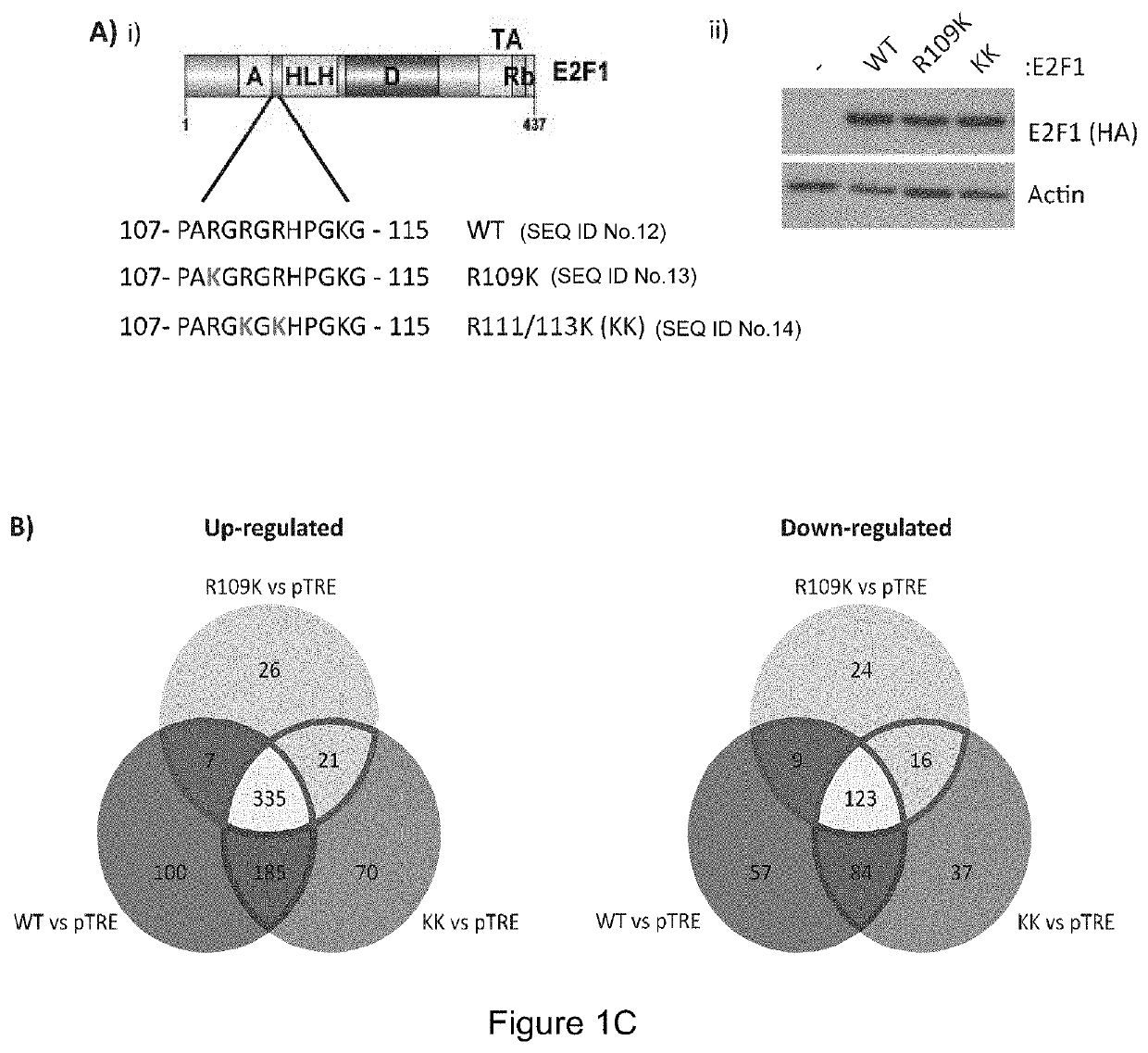Cancer therapy by modifying neoantigen expression
a technology of neoantigens and cancer cells, applied in the direction of cancer antigen ingredients, cell receptors/surface-antigens/surface-determinants, disease diagnosis, etc., can solve the problems of difficult identification of neoantigens, rare cures with checkpoint inhibitors, and many cancer patients experiencing modest clinical benefits, etc., to achieve the effect of manipulating the retention of introns in cancer cells
- Summary
- Abstract
- Description
- Claims
- Application Information
AI Technical Summary
Benefits of technology
Problems solved by technology
Method used
Image
Examples
examples
Arginine Methylation Expands the Regulatory Mechanisms and Extends the Genomic Landscape Under E2F Control.
Summary—E2F1 Arginine Methylation Influences Alternative Splicing
[0315]E2F is a family of master transcription regulators involved in mediating diverse cell fates. Here, we show that residue-specific arginine methylation (meR) by PRMT5 enables E2F1 to regulate many genes at the level of alternative RNA splicing, rather than through its classical transcription-based mechanism. The p100 / TSN tudor domain protein reads the meR mark on chromatin-bound E2F1, allowing snRNA components of the splicing machinery to assemble with E2F1. A large set of RNAs including spliced variants associate with E2F1 by virtue of the methyl mark. By focusing on the deSUMOylase SENP7 gene, which we identified as an E2F target gene, we establish that alternative splicing is functionally important for E2F1 activity. Thus, meR E2F1 through selective alternative splicing, enables synthesis of the active SENP...
PUM
| Property | Measurement | Unit |
|---|---|---|
| Mass | aaaaa | aaaaa |
| Molecular weight | aaaaa | aaaaa |
| Stability | aaaaa | aaaaa |
Abstract
Description
Claims
Application Information
 Login to View More
Login to View More - R&D
- Intellectual Property
- Life Sciences
- Materials
- Tech Scout
- Unparalleled Data Quality
- Higher Quality Content
- 60% Fewer Hallucinations
Browse by: Latest US Patents, China's latest patents, Technical Efficacy Thesaurus, Application Domain, Technology Topic, Popular Technical Reports.
© 2025 PatSnap. All rights reserved.Legal|Privacy policy|Modern Slavery Act Transparency Statement|Sitemap|About US| Contact US: help@patsnap.com



